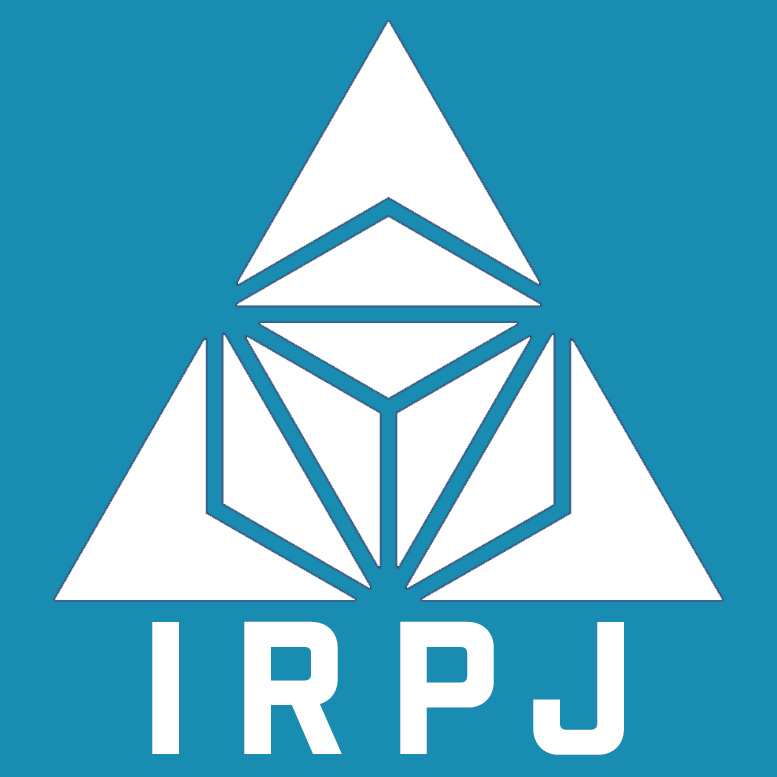Key Points
– Research suggests the Netherlands faces ongoing infectious disease challenges, with recent outbreaks of pertussis and Mycoplasma pneumoniae in 2023-2024.
– It seems likely that reduced immunity from COVID-19 restrictions contributed to these outbreaks, alongside high vaccination rates.
– The evidence leans toward effective public health measures, like vaccination and surveillance, being crucial for control, though outbreaks still occur.
Introduction
The Netherlands, known for its advanced healthcare, has seen significant infectious disease outbreaks recently. This paper, “Epidemiology of Infectious Diseases in the Netherlands: A Case Study of Recent Outbreaks,” explores two key outbreaks from 2023-2024: pertussis (whooping cough) and Mycoplasma pneumoniae pneumonia. These cases highlight the importance of understanding disease spread, control measures, and the role of public health surveillance.
Background
Infectious diseases remain a global concern, and the Netherlands is no exception. A study from 2007-2011 showed diseases like invasive pneumococcal disease and influenza had significant impacts ([Disease Burden of 32 Infectious Diseases in the Netherlands, 2007-2011](https://journals.plos.org/plosone/article?id=10.1371/journal.pone.0153106)). The National Institute for Public Health and the Environment (RIVM) monitors these trends, providing annual reports that inform policymakers ([State of Infectious Diseases in the Netherlands, 2023](https://www.rivm.nl/publicaties/staat-van-infectieziekten-in-nederland-2023)).
Case Studies
Pertussis Outbreak (2023-2024)
Pertussis, a contagious respiratory disease, saw 17,503 cases in 2024, including 813 babies and 9 deaths ([Current figures on whooping cough in the Netherlands](https://www.rivm.nl/en/whooping-cough/current-figures-on-whooping-cough-in-netherlands)). This outbreak, part of a European trend with over 25,000 cases in 2023 ([Increase of pertussis cases in the EU/EEA](https://www.ecdc.europa.eu/en/publications-data/increase-pertussis-cases-eueea)), likely resulted from lower immunity during COVID-19 restrictions. Control measures include vaccination, especially for pregnant women, and antibiotics, though maintaining high coverage is challenging.
Mycoplasma pneumoniae Outbreak (2023-2024)
Mycoplasma pneumoniae, causing atypical pneumonia, surged from October 2023, with increased hospital admissions and a median patient age of 28 years, lower than previous years ([Increased incidence of Mycoplasma pneumoniae infections and hospital admissions in the Netherlands, November to December 2023](https://www.eurosurveillance.org/content/10.2807/1560-7917.ES.2024.29.4.2300724)). This outbreak, possibly linked to resumed social interactions post-COVID, highlights the need for monitoring and macrolide antibiotics, with low resistance reported.
Analysis
Both outbreaks underscore the complexity of controlling infectious diseases, even with high vaccination rates. Reduced immunity from COVID-19 restrictions and the cyclical nature of these diseases played roles. The Netherlands’ public health system, led by RIVM, relies on surveillance and education, but outbreaks show the need for adaptive strategies.
Conclusion
These outbreaks remind us of the ongoing threat of infectious diseases. Effective control requires vaccination, surveillance, and public education. By learning from these cases, the Netherlands can better prepare for future challenges, minimizing impacts on public health.
Report: Detailed Analysis of Infectious Disease Outbreaks in the Netherlands
This report provides an in-depth examination of the epidemiology of infectious diseases in the Netherlands, focusing on recent outbreaks of pertussis and Mycoplasma pneumoniae in 2023-2024. It expands on the key points, offering a comprehensive overview for researchers, policymakers, and public health professionals, based on available data as of March 22, 2025.
Introduction and Context
The Netherlands, with its advanced healthcare infrastructure and high vaccination coverage, continues to face challenges from infectious diseases. This analysis is grounded in the need to understand recent outbreaks, informed by historical data and current surveillance efforts. The focus on pertussis and Mycoplasma pneumoniae reflects their significance in 2023-2024, providing insights into disease dynamics and public health responses.
Background: Historical Disease Burden
A foundational study by van Lier et al. (2016) estimated the disease burden of 32 infectious diseases in the Netherlands from 2007 to 2011, using the disability-adjusted life years (DALY) measure ([Disease Burden of 32 Infectious Diseases in the Netherlands, 2007-2011](https://journals.plos.org/plosone/article?id=10.1371/journal.pone.0153106)). It found invasive pneumococcal disease and influenza had the highest burdens, representing 16% and 15% of the total, respectively. This historical context highlights the ongoing challenge, with diseases fluctuating due to seasonal patterns and immunity levels.
The RIVM, central to infectious disease control, publishes annual reports on the state of infectious diseases, informing policymakers. The 2023 report noted a return to pre-COVID patterns, with diseases like flu and RS-virus peaking in winter ([State of Infectious Diseases in the Netherlands, 2023](https://www.rivm.nl/publicaties/staat-van-infectieziekten-in-nederland-2023)). This background sets the stage for analyzing recent outbreaks, influenced by the pandemic’s disruption of disease circulation.
Case Study 1: Pertussis Outbreak (2023-2024)
Pertussis, caused by Bordetella pertussis, is highly contagious, with outbreaks occurring every 3 to 5 years despite vaccination efforts. The 2023-2024 outbreak was significant, with RIVM reporting 17,503 cases in 2024, including 813 babies and 9 deaths, as of February 5, 2025 ([Current figures on whooping cough in the Netherlands](https://www.rivm.nl/en/whooping-cough/current-figures-on-whooping-cough-in-netherlands)). This followed a European trend, with over 25,000 cases in the EU/EEA in 2023, a ten-fold increase from 2022-2021 ([Increase of pertussis cases in the EU/EEA](https://www.ecdc.europa.eu/en/publications-data/increase-pertussis-cases-eueea)).
The outbreak’s severity, particularly among infants under six months, reflects their vulnerability, with many hospitalizations reported. Factors contributing to the surge include reduced circulation during COVID-19, lowering population immunity, especially among children and adolescents. Vaccination coverage, while high, may not prevent outbreaks if booster doses lapse, highlighting the need for enhanced strategies like vaccinating pregnant women for newborn protection.
Control measures include the national immunization program, antibiotics for cases, and public health education. However, the outbreak’s scale, with deaths and hospitalizations, underscores the need for improved surveillance and timely interventions to maintain herd immunity.
Case Study 2: Mycoplasma pneumoniae Outbreak (2023-2024)
Mycoplasma pneumoniae, causing atypical pneumonia, saw a notable outbreak from October 2023, with increased hospital admissions reported by Eurosurveillance ([Increased incidence of Mycoplasma pneumoniae infections and hospital admissions in the Netherlands, November to December 2023](https://www.eurosurveillance.org/content/10.2807/1560-7917.ES.2024.29.4.2300724)). The median patient age was 28 years, lower than 40 years in 2019-2020, indicating a shift towards younger populations. This outbreak, with incidence not seen since 2011, was part of a broader European trend, possibly linked to resumed social interactions post-COVID.
RIVM’s study on pneumonia causes found Mycoplasma pneumoniae in 54 samples from November 2023 to January 2024, with 44 cases in the latter period, suggesting a winter peak ([Study on causes of rise in pneumonia in the Netherlands](https://www.rivm.nl/en/respiratory-infections/study-on-causes-of-pneumonia-in-netherlands)). Treatment involves macrolides, with low resistance reported, but the outbreak highlights the need for effective diagnostics and public education on respiratory symptoms.
This outbreak, affecting children and young adults, underscores the cyclical nature of Mycoplasma pneumoniae, typically every 3 to 7 years, and the importance of surveillance to manage respiratory pathogens post-pandemic.
Detailed Analysis and Discussion
Both outbreaks reveal the complexity of infectious disease control. For pertussis, the high case numbers and deaths, particularly among infants, suggest gaps in immunity, possibly exacerbated by COVID-19 restrictions reducing natural exposure. The ECDC notes infants under six months face the highest risk, with hospitalizations and deaths concentrated here, emphasizing vaccination strategies for pregnant women ([Increase of pertussis cases in the EU/EEA](https://www.ecdc.europa.eu/en/publications-data/increase-pertussis-cases-eueea)).
For Mycoplasma pneumoniae, the younger patient age and hospital admissions indicate a resurgence post-COVID, with social mixing facilitating spread. The RIVM’s role in monitoring and analyzing trends, as seen in the 2023 report, is crucial, but these outbreaks highlight the need for adaptive public health measures, including enhanced surveillance and education.
The Netherlands’ public health system, with municipal health services (GGDs) and RIVM, is robust, but these outbreaks show the limits of vaccination alone. They also reflect global trends, with Europe seeing similar surges, suggesting a need for international collaboration and data sharing.
Conclusion and Recommendations
The pertussis and Mycoplasma pneumoniae outbreaks in 2023-2024 underscore the persistent threat of infectious diseases. Effective control requires a multifaceted approach: maintaining high vaccination coverage, enhancing surveillance, ensuring timely diagnosis, and educating the public. By learning from these cases, the Netherlands can strengthen pandemic preparedness, potentially investing in booster programs and improved diagnostic tools, to minimize future impacts on public health.
Key Citations
– [Disease Burden of 32 Infectious Diseases in the Netherlands, 2007-2011](https://journals.plos.org/plosone/article?id=10.1371/journal.pone.0153106)
– [State of Infectious Diseases in the Netherlands, 2023](https://www.rivm.nl/publicaties/staat-van-infectieziekten-in-nederland-2023)
– [Current figures on whooping cough in the Netherlands](https://www.rivm.nl/en/whooping-cough/current-figures-on-whooping-cough-in-netherlands)
– [Increase of pertussis cases in the EU/EEA](https://www.ecdc.europa.eu/en/publications-data/increase-pertussis-cases-eueea)
– [Increased incidence of Mycoplasma pneumoniae infections and hospital admissions in the Netherlands, November to December 2023](https://www.eurosurveillance.org/content/10.2807/1560-7917.ES.2024.29.4.2300724)
– [Study on causes of rise in pneumonia in the Netherlands](https://www.rivm.nl/en/respiratory-infections/study-on-causes-of-pneumonia-in-netherlands)






